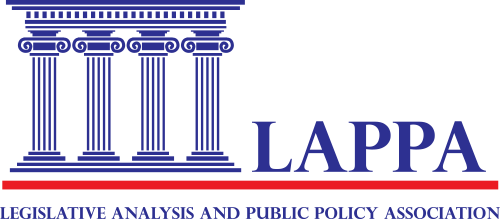Naloxone Access
This Fact Sheet provides readers with an overview of what naloxone is and a brief overview of naloxone access law across the United States....

This Fact Sheet provides readers with an overview of what naloxone is and a brief overview of naloxone access law across the United States....
The Model Law Enforcement and Other First Responder Deflection Act, drafted in collaboration with the Police, Treatment, and Community Collaborative (PTACC), encourages the use and establishment of deflection programs on the state level. Specifically, the model act (1) authorizes law enforcement and other first responders to develop and implement collaborative deflection programs that provide proactive policing to assist individuals who are at risk; (2) offers pathways to treatment, recovery services, housing, medication for addiction treatment, whole family services, and other needed supports; (3) requires deflection programs to have certain threshold elements to be eligible to receive grant funding; and (4) requires agencies establishing deflection programs to develop comprehensive memoranda of understanding in conjunction with, and agreed to by, all deflection program partners....
All across the U.S. jails are filled with people who need medical care and social services, many of whom cycle in and out of jail without ever receiving the help they need. One emerging model to combat this problem is deflection, which seeks to prevent individuals who have low to moderate criminogenic risk, but significant unmet social, economic, and health needs, from entering the criminal justice system. The goal of deflection programs is to lessen the burden on the criminal justice system by connecting those individuals—before they enter the criminal justice system—to treatment and social services to which they might not otherwise have access. This document is designed to: (1) provide a singular resource for each jurisdiction’s deflection laws; (2) allow for a comparison of these laws between jurisdictions; and (3) identify and highlight interesting provisions....
LAPPA's Model Law Enforcement Event Deconfliction Act (the Act) is intended to implement procedures across the country to safeguard law enforcement from incidents of “friendly fire.” The Act requires that law enforcement personnel utilize event deconfliction software, which will notify them of any potential conflicts with other law enforcement activity in the same area, including service of arrest or search warrants, surveillance operations, or other high-risk or specialized law enforcement activities. The Act further requires that law enforcement personnel take positive action upon being notified by the event deconfliction system of a conflict and provides penalties for failure to take such action. The Act was drafted with the invaluable assistance of members of the law enforcement community. ...
In recent years, some states have enacted Good Samaritan and Naloxone Access laws to help reduce overdose deaths and respond to opioid overdoses.The Comprehensive Addiction and Recovery Act of 2016 included a provision for GAO to review these laws. This report addresses the following: (1) the efforts ONDCP has taken to collect and disseminate information on Good Samaritan and Naloxone Access laws, (2) the extent to which states, territories, and D.C. have these laws and the characteristics of them, and (3) what research indicates concerning the effects of Good Samaritan laws.To answer these questions, GAO collected and reviewed ONDCP documents and interviewed agency officials. GAO also reviewed and analyzed selected characteristics of jurisdictions' Good Samaritan and Naloxone Access laws. Further, GAO conducted a literature review of empirical studies published from 2010 through May 2020 that examined the effects of Good Samaritan laws....
The HOPE Initiative provides a daylong training program on substance use disorders, treatment, and recovery for state and local law enforcement officers, enabling them to help people obtain and sustain long-term recovery. All 39 Rhode Island law enforcement agencies have completed the training...


